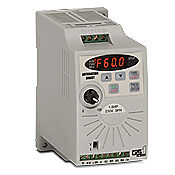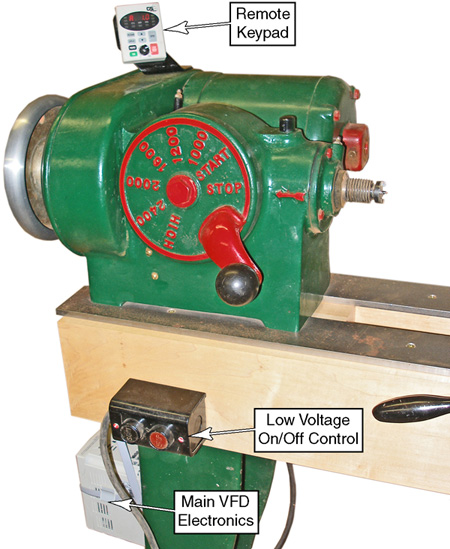Ok, I need help again from the FOG community on what is the most practical, easiest solution to this dilemma. I recently acquired a used jointer for a relatively low-cost (which might have been a clue that might have given me some pause) and found out afterwards the auction that it is a 3-phase motor. What's done is done and I've researched what my options are for converting to use w/ my 220v 1-phase outlet. Basically, I can get a static or rotary generator or get a VFD (Variable Frequency Driver) or just get a new motor that is a 220v 1-phase and just replace and sell or give away the 3-phase motor.
I ruled out the generators because cost-wise it's a wash or perhaps even more $$ than it's worth and it would be the same as getting a VFD. The VFD seems like an attractive option for me since that also apparently allows for speed control on the unit as well, but involves some questions on whether the model I get would be a compatible with the motor that I have (which is a Leland 3-phase 1.5 HP motor). The jointer is an 8" Grizzzy and while the markings on the motor say 1 HP, the manual says it's 1.5 so I'm more inclined to believe the motor label. I'll attach a picture of the motor specs/label here too for reference. The other option is of course to replace the motor and if I were to go that route, does anyone have a good recommendation on which one I should choose? Get something that's the same size (or go bigger?) but obviously 1-phase version. Then in looking at new motors there's all these things I need to consider like frame size, RPM of the motor, and enclosure (which I surmise should be of the TEFC variety so that dust wouldn't get in and mess it up).
Link to a VFD that may work for my motor?:
http://www.ebay.com/itm/VARIABLE-FREQUENCY-DRIVE-INVERTER-VFD-NEW-2HP-1-5KW-p-/220692560531?pt=LH_DefaultDomain_0&hash=item33624d3a93
If I were buy a new motor, here's a slew of them to choose from (among many others):
http://www.e-motorsonline.com/products.html?cat=1&f=11_459
[attachthumb=#]
So, what do you suggest. Get a VFD and see if I can require it or get an Electrician to do that OR buy a new motor and do that myself or get an Electrician to do the same? Costwise, the VFD might be cheaper but a little more work so it's almost a toss-up. What do you suggest? Has anyone gone through this before and how did you decide which way to go?
I ruled out the generators because cost-wise it's a wash or perhaps even more $$ than it's worth and it would be the same as getting a VFD. The VFD seems like an attractive option for me since that also apparently allows for speed control on the unit as well, but involves some questions on whether the model I get would be a compatible with the motor that I have (which is a Leland 3-phase 1.5 HP motor). The jointer is an 8" Grizzzy and while the markings on the motor say 1 HP, the manual says it's 1.5 so I'm more inclined to believe the motor label. I'll attach a picture of the motor specs/label here too for reference. The other option is of course to replace the motor and if I were to go that route, does anyone have a good recommendation on which one I should choose? Get something that's the same size (or go bigger?) but obviously 1-phase version. Then in looking at new motors there's all these things I need to consider like frame size, RPM of the motor, and enclosure (which I surmise should be of the TEFC variety so that dust wouldn't get in and mess it up).
Link to a VFD that may work for my motor?:
http://www.ebay.com/itm/VARIABLE-FREQUENCY-DRIVE-INVERTER-VFD-NEW-2HP-1-5KW-p-/220692560531?pt=LH_DefaultDomain_0&hash=item33624d3a93
If I were buy a new motor, here's a slew of them to choose from (among many others):
http://www.e-motorsonline.com/products.html?cat=1&f=11_459
[attachthumb=#]
So, what do you suggest. Get a VFD and see if I can require it or get an Electrician to do that OR buy a new motor and do that myself or get an Electrician to do the same? Costwise, the VFD might be cheaper but a little more work so it's almost a toss-up. What do you suggest? Has anyone gone through this before and how did you decide which way to go?



